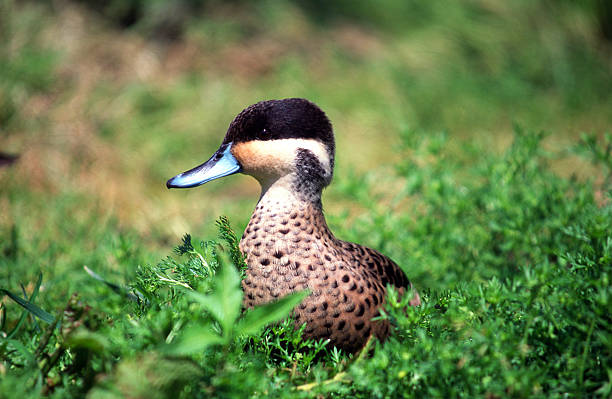How do predators use fast reaction times for hunting?

Predators in the animal kingdom rely on a variety of strategies to capture prey, and one of the most crucial is their ability to react quickly. Animal reaction times can mean the difference between life and death, especially for predators who must catch fast-moving or evasive prey. Whether hunting in the air, on land, or underwater, fast reaction times allow predators to anticipate prey movements, adjust to changing conditions, and strike with precision. In this essay, we’ll explore how different types of predators use fast reaction times in hunting and examine the role of these reactions in their survival and evolutionary success.
Understanding Animal Reaction Times
Before diving into the specifics of how predators use reaction times, it’s essential to understand what reaction times are. Animal reaction times refer to the speed at which an organism perceives and responds to stimuli, such as the sight or sound of prey. The quicker an animal can respond, the more likely it is to succeed in a hunt. Reaction time is a combination of sensory input, neural processing, and motor output. Sensory organs like eyes, ears, and whiskers detect signals, while the brain processes this information, and then muscles act accordingly.
For predators, fast animal reaction times are crucial not only for initiating the hunt but also for adjusting mid-pursuit. Many prey species have evolved to detect and escape predators, leading to an ongoing evolutionary arms race in which reaction speed plays a central role.
Fast Reaction Times in Terrestrial Predators
Big Cats: Lions, Tigers, and Cheetahs
Big cats are some of the most iconic terrestrial predators, and their hunting success is heavily dependent on quick animal reaction times. Cheetahs, for example, are known for their incredible speed, capable of reaching up to 60 miles per hour in short bursts. However, it’s not just speed that makes them successful hunters—it’s their ability to make split-second decisions. While running at high speeds, cheetahs can react to sudden changes in the direction of their prey, adjusting their course with remarkable agility. Their fast animal reaction times allow them to anticipate the prey’s movements, making last-minute adjustments that often result in a successful kill.
Lions and tigers, although slower than cheetahs, also rely on quick reactions during their hunts. These animals often hunt in groups (lions) or alone (tigers) and use stealth to get close to their prey before making a sudden dash. Their animal reaction times are vital during this final phase of the hunt, as they must quickly respond to the prey’s attempts to flee, often using their powerful muscles to pounce or tackle their target.
Wolves and Wild Dogs
Wolves and wild dogs rely on cooperation and endurance during hunts, but fast animal reaction times are still essential. These predators often hunt in packs, coordinating their movements to corner or tire out prey. During a hunt, wolves and wild dogs must react quickly to changes in the prey’s direction, communicating with one another through vocalizations and body language. Fast animal reaction times allow them to adjust their strategy in real time, increasing the chances of a successful hunt.
For example, when a pack of wolves chases a deer, they must anticipate and react to the deer’s attempts to escape. A wolf with slow reactions may lose track of the prey or get out of sync with the pack, reducing the overall effectiveness of the hunt.
Aerial Predators and Reaction Times
Raptors: Eagles, Hawks, and Falcons
Aerial predators, such as eagles, hawks, and falcons, use their exceptional animal reaction times to hunt prey from above. These birds of prey have sharp eyesight that allows them to detect small movements from great distances, but it’s their reaction times that enable them to swoop down and capture prey with pinpoint accuracy.
Falcons, particularly the peregrine falcon, are among the fastest animals on Earth, capable of reaching speeds over 200 miles per hour during a dive. When a falcon spots its prey, it enters a high-speed stoop, relying on fast animal reaction times to adjust its trajectory and compensate for wind conditions or sudden movements of its target. The precision of their strike depends on their ability to react quickly to both external factors and the movements of the prey.
Hawks and eagles, while not as fast as falcons, also rely on fast reactions to capture prey. They often use a combination of soaring and sudden, rapid dives to surprise their targets. Their reaction times enable them to adjust their wings, talons, and beaks to capture prey mid-flight or on the ground with remarkable accuracy.
Bats
Bats are another example of aerial predators with fast animal reaction times, especially when using echolocation to hunt insects at night. As they fly, bats emit high-frequency sounds that bounce off objects and return as echoes, allowing them to “see” their environment in complete darkness. Fast animal reaction times are necessary for bats to interpret these echoes and adjust their flight path to capture fast-moving insects.
Some species of bats can react in milliseconds to avoid obstacles or snatch prey out of the air. This quick response time is essential in environments where prey can dart away at any moment or where obstacles like trees and rocks present constant challenges.
Aquatic Predators and Reaction Times
Sharks
Sharks are some of the most efficient aquatic predators, and they use their quick animal reaction times to detect and respond to prey in various ways. Many species of sharks have highly developed sensory systems, including electroreception, which allows them to detect the electric fields generated by the muscle movements of other animals. Once they sense a potential meal, fast reaction times enable them to close in on their prey rapidly.
The great white shark, for example, uses its reaction times to launch sudden, powerful attacks on seals and other marine mammals. Their ability to react quickly to the movements of their prey, combined with their powerful jaws and speed, makes them formidable hunters.
Dolphins and Orcas
Dolphins and orcas (killer whales) are highly intelligent marine predators that rely on fast animal reaction times during coordinated hunts. These animals often hunt in groups, using complex strategies to herd and capture prey such as fish, squid, or even large marine mammals.
Dolphins use echolocation to detect prey, much like bats, and their fast reactions allow them to quickly change direction and speed to outmaneuver their targets. In group hunting scenarios, dolphins and orcas must react rapidly to the movements of both their prey and their fellow hunters, ensuring that they work together effectively.
Cuttlefish and Squid
Cuttlefish and squid are cephalopods known for their agility and speed underwater. These animals have highly developed nervous systems, giving them fast animal reaction times that are essential for both hunting and evading predators.
Squid, for example, use jet propulsion to move rapidly through the water, and their quick reactions allow them to adjust their speed and direction as they chase down small fish or shrimp. Cuttlefish, on the other hand, use their ability to change color and texture to camouflage themselves, reacting swiftly to the presence of prey or predators. Once they spot prey, they use their fast reaction times to extend their tentacles and capture their target with precision.
Predators with Unique Reaction Time Adaptations
Frogs and Toads
Frogs and toads may not seem like the fastest predators, but their quick animal reaction times make them effective hunters. These amphibians rely on their long, sticky tongues to catch insects and other small prey. Once a frog detects movement, its brain sends rapid signals to extend its tongue, capturing the prey almost instantly.
Frogs’ reaction times are so fast that they can catch insects in mid-flight. This speed is essential for their survival, as their prey is often capable of quick, unpredictable movements.
Spiders
Spiders, particularly web-building species, use fast animal reaction times to capture prey that becomes ensnared in their webs. While a spider may seem stationary, it’s constantly monitoring the vibrations in its web. When a potential meal becomes trapped, the spider reacts immediately, racing to subdue and immobilize the prey before it can escape.
Hunting spiders, such as jumping spiders, rely even more heavily on fast animal reaction times. These spiders do not build webs to capture prey; instead, they actively hunt, using their quick reflexes to pounce on unsuspecting insects. Their speed and precision allow them to close in on prey with remarkable accuracy.
The Role of Evolution in Fast Reaction Times
The development of fast animal reaction times in predators is a result of evolutionary pressures. In many cases, predators and prey are engaged in an ongoing arms race, where each side evolves adaptations to improve survival. As prey species evolve to become faster and more elusive, predators must also develop faster reaction times to keep up.
For example, the evolution of fast-twitch muscle fibers in certain animals has allowed predators like cheetahs and falcons to move and react more quickly than their prey. These fibers contract rapidly, allowing for sudden bursts of speed that are essential during a hunt. Similarly, the evolution of specialized sensory organs, such as the electroreceptors in sharks or the echolocation systems in bats and dolphins, enhances predators’ ability to detect and react to prey in real time.
Conclusion
In the animal kingdom, fast animal reaction times are a critical factor in the hunting success of many predators. Whether on land, in the air, or underwater, predators rely on their ability to react quickly to capture prey and survive in competitive environments. From the swift movements of big cats and falcons to the rapid sensory responses of sharks and bats, reaction times play a pivotal role in ensuring predators maintain their place at the top of the food chain. Evolution has shaped these abilities over millennia, allowing predators to stay one step ahead of their prey and maintain balance in ecosystems around the world.





